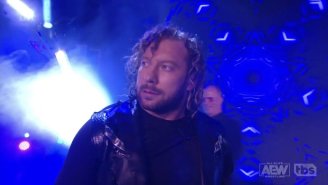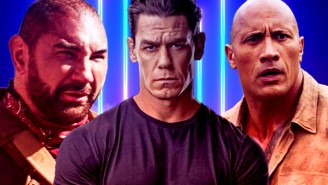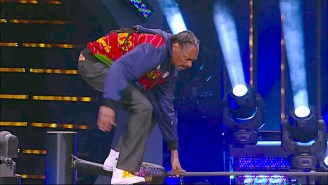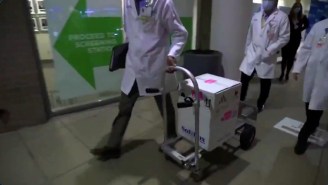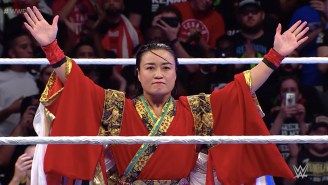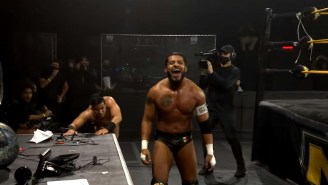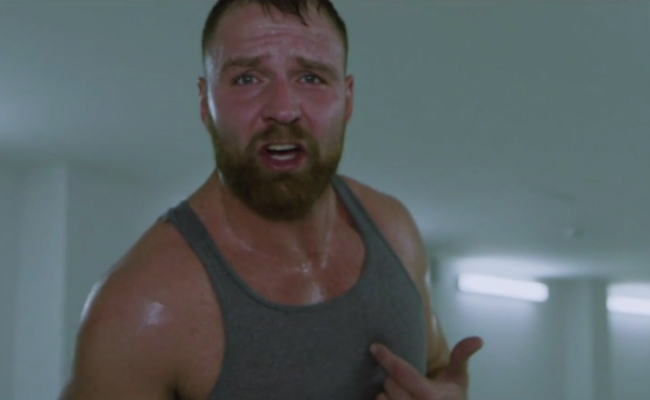
After spending nearly nine months recovering from an injury that kept him off TV, Dean Ambrose is once again one of the most prominent wrestlers in WWE. At the end of the episode of Raw that started with Roman Reigns vacating the Universal Championship, Ambrose controversially turned on Seth Rollins, resuming their feud from years ago with opposite face-heel alignments. Since then, he’s been attacking Rollins physically and verbally whenever possible. He didn’t interfere with the Intercontinental Champion’s match at Survivor Series, but during the show, it was announced that Ambrose and Rollins will face off for the white belt at the upcoming TLC pay-per-view.
Like WWE Championship challengers Shinsuke Nakamura and Samoa Joe, Ambrose was recently the subject of a WWE Chronicle documentary. The one-hour WWE Network special follows him from August 9 (the week before he returned from injury) to the day after the go-home Raw for Survivor Series. While it does seem to include shoot elements, especially about his recovery, it’s the most kayfabe Chronicle so far. Along with backstage and training footage, we get a closer look at the mind of the revamped Dean Ambrose character as he deals with the buildup to and the aftermath of his rejection of the Shield. It’s a compelling watch.
Nakamura’s episode of this series introduced a lot of information about the wrestler that many viewers might not have known, and Joe’s provided a little as well. But after six years on WWE’s main roster, what the company is going to use from Ambrose’s personal history seems to be out there at this point. However, we do learn more, in Ambrose’s own words, about his time away from the ring and its cause.
In a segment filmed in Cincinnati, Ohio, Ambrose says his serious shoulder problems started after TLC 2017, when he found he couldn’t straighten his arm all the way. By November, his “tricep started to atrophy.” He had an extremely pro wrestling plan to deal with this:
“I couldn’t do push-ups, I couldn’t do anything. I just kept thinking, “if I can make it to Survivor Series,” because after Survivor Series I was going to miss a show for the first time in six years. I was going on my honeymoon to Hawaii, and I figured if I had a few extra days to just rest it, it would fix itself.”
However, when he was in Hawaii, he couldn’t do tricep exercises with a two-pound dumbbell or even wall pushups. When his arm was swollen the day after he attempted these things, he knew “this ain’t normal.” Ambrose says he wasn’t afraid while dealing with the injury, but had to process that this “was the first time my body had ever – I felt had truly been in danger, or truly not cooperating with me after everything I’ve asked it to do over the years,” years that have included “barbed wire, glass, fire, thumbtacks, staple guns to the tongue.”
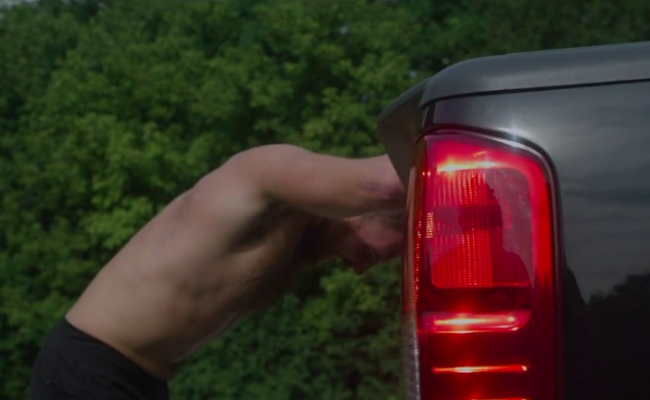
The documentary follows Ambrose during some training sessions as he works to get back into ring shape. We see him doing what he calls one of his favorite things to do, “old school blood-and-guts training.” He tells a story about his first wrestling coach from when he was in sixth grade, who said re: running sprints, “Don’t pace yourself. Just go until you fall over, and we’ll pick you back up.” Ambrose says this philosophy stuck with him through his entire life, and that leaving everything in the ring is “the addictive part of what we do… I need that release. I burn fuel and it’s gotta go somewhere. It can be self-destructive, or it can be positive.” He also sums up what he likes about wrestling as a creative as well as a physical outlet, saying,
“Wrestling is supposed to be just two guys in the ring, expressing themselves through highly aggressive physicality… In the wrestling ring is one place where that’s fully allowed and you can let yourself go and be as wild and as nasty as you want to be.”
If you like unscripted, shoot Dean Ambrose, you should enjoy this part of the documentary, as well as the glimpses of him interacting backstage and on the road with Seth Rollins, Roman Reigns, and his wife, Renee Young. Rollins and Reigns are delighted to have him back on Raw with them, and Young tells her husband, “You look like a million bucks,” after his return to the show.
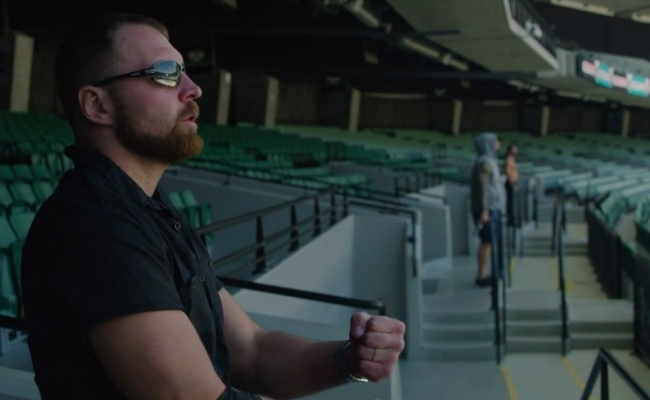
Ambrose’s real-life closeness with Reigns is cut into the documentary in a way that highlights his betrayal of Rollins. We see him tell a fan in Australia he doesn’t remember the first time he met Reigns because they drank so much beer, but he’s sure they hit it off right away. Backstage at the October 22, 2018 Raw, after Reigns’ announcement, he tells the camera, “I don’t know what to do with myself… Roman’s been my road wife, my best friend, for six years… He’s spent more time in a car with me than he has with his own kids the past six years.” The only way pro wrestlers get through their lifestyle is by pulling each other along, and “next week, I gotta get in the car and I don’t have Roman sitting next to me. I still have to struggle through this life, you know, without your support system…”
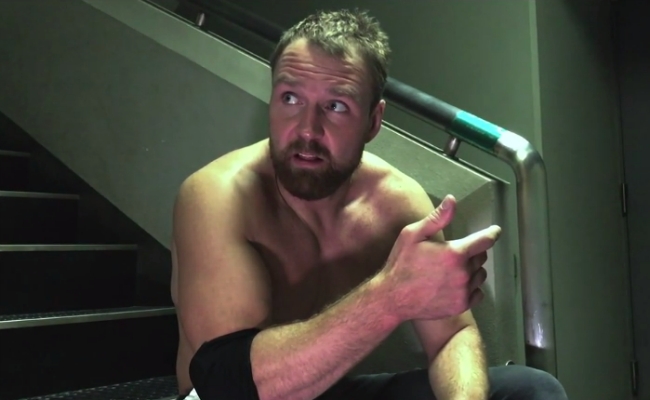
His feud with Rollins, shown via clips from Raw and house shows, is foreshadowed throughout the documentary. In segments filmed well before the heel turn, it’s clear that Ambrose’s betrayal of the Shield was in the cards since they started teasing it on Raw, and the character (and possibly the wrestler, and possibly WWE creative) just didn’t know when it would happen. Here are a few of Ambrose’s ominous lines in the months leading up to his attack on Rollins:
- While in Japan: “I love these guys. They’re my brothers… Not matter what happens between us, we’re family, and that’s what makes it so powerful. But we’re just… I don’t know. But I’m just going to try and relax and enjoy this last trip around the world… because I got the feeling that this could very well be the last time.”
- Backstage at the September 24 Raw, he questions why he worked for months to come back and be “everybody’s joke. Three-hour show dedicated to Ambrose is a friggin’ loser.”
- “I’m not fulfilled… three hours on Monday Night Raw I’m just backup bodyguard duty, you know. I can’t just have creative free reign to do whatever I want to do because it’s so important, the Shield is so important.”
- When asked before the Super Show-Down by a producer if he knows what he’s going to do, Ambrose says, “No! Maybe I do, I just haven’t come to terms with it yet.”
- After saying there are other things he wants to do in his career, he says, “sometimes you gotta leave the past in the past and just move on.”
- “We’re doing the Shield thing again tonight, and every time I wonder if this is going to be the last time, or this could be the last time, or if it should be the last time, but… Right now I’m just going to put on the old Shield uniform, clock in, go to work, and not think about it too much.”
We don’t get the answer to “Why, Dean, why?” that audience members and Seth Rollins have been asking on Raw, but Ambrose does justify the timing of his heel turn. He answers the question of why he turned on Rollins right after they won a championship match dedicated to Reigns with, “We won the match, didn’t we?”
The craziest part of this documentary, to me, was seeing the reactions of fans as Ambrose left the arena after his initial attack on Rollins. Fans in the lobby and outside the venue yell things like, “Dean, why’d you do it?” and boo him on his way out, which I can’t imagine having the mindset to do like three hours after the cancer announcement, at least while not actively sitting in the audience of that Raw. Ambrose, in this third act of the documentary, cuts several angst-ridden promos at the audience that keeps asking him “Why?” He says he’s sacrificed his body for the entertainment of people who don’t know him, so “Why what? I don’t owe anybody sh*t.”
In case you forgot, this documentary serves as a reminder that Dean Ambrose is one of the best actors and improvisers in the WWE right now. It also, way more than I expected, adds depth to the Lunatic Fringe since he returned from injury. This WWE Chronicle series is really well made, and it’s really interesting to me that, judging especially by the past two episodes, it seems to be primarily an outlet for wrestlers to give less-scripted, more realistic promo performances. This blend of real-life revelations, kayfabe character work, and aesthetically-pleasing production style is what has made these some of the most interesting Network original content this year.

